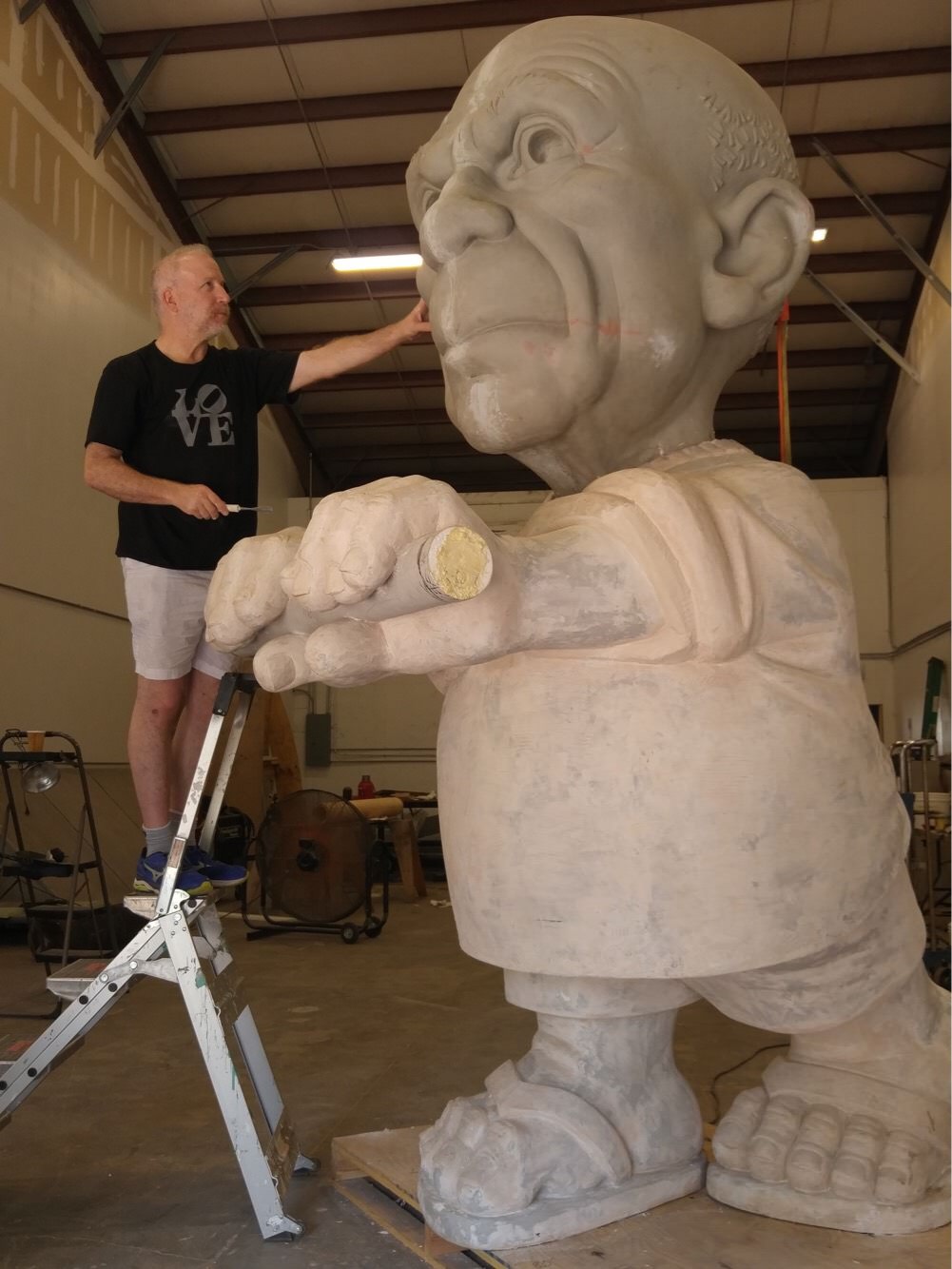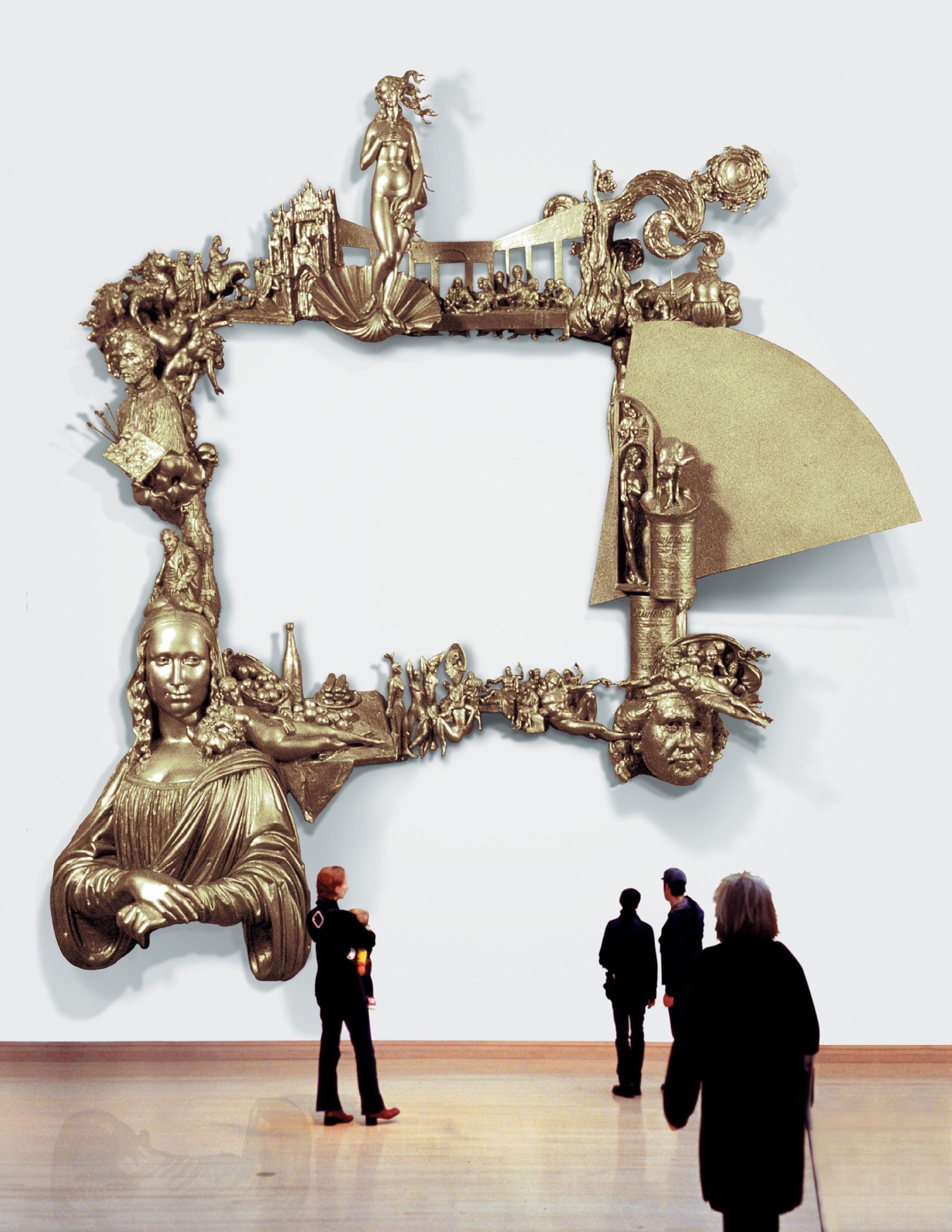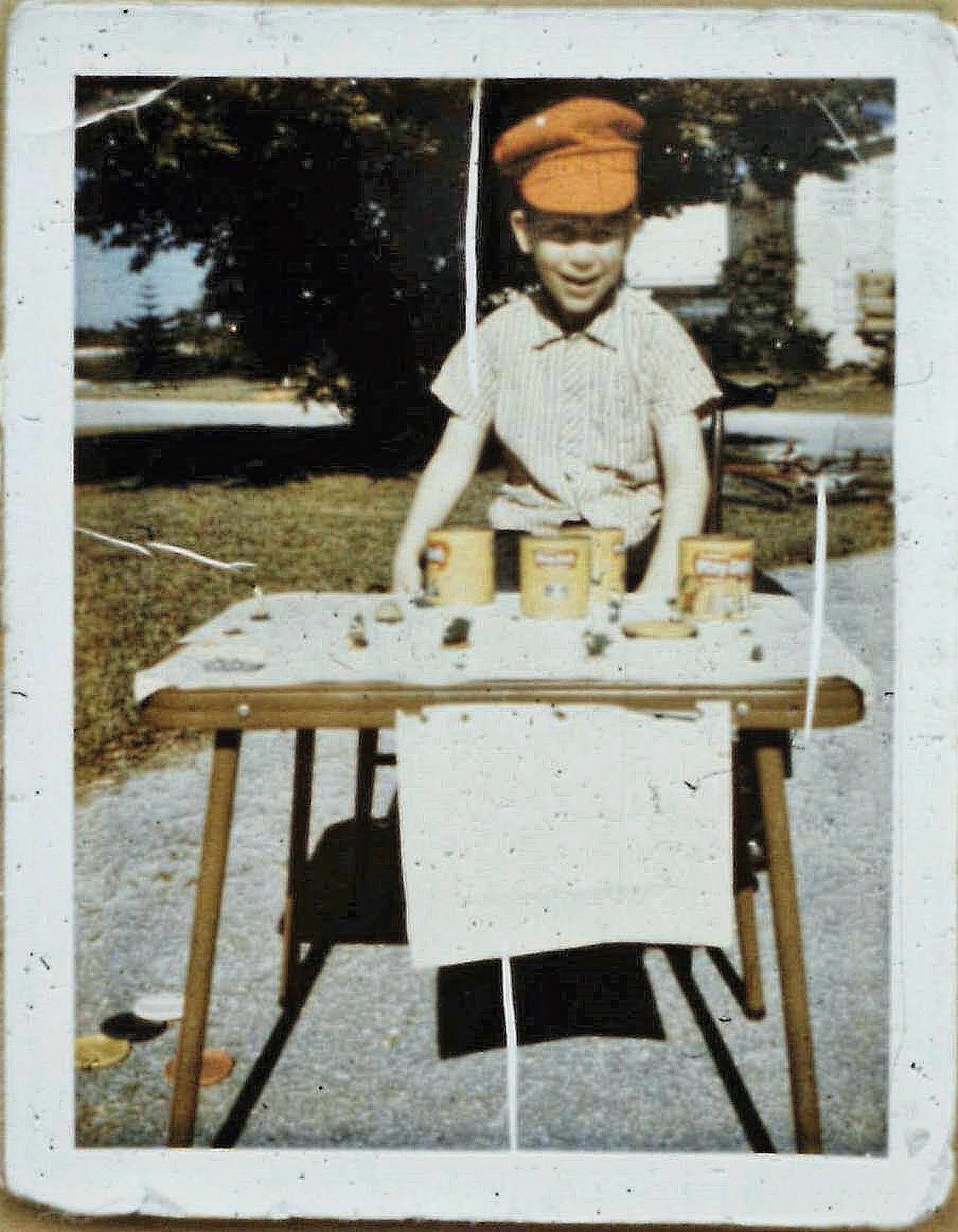Elliott Arkin is a satirical sculptor whose art encompasses both his sense of humor and love for art history. This Duchamp devotee employs both the comedy and social commentary of the Fountain into his own work. His whimsical statues make the study of art history more accessible to the everyday person.
It is this accessibility that drives his latest ambitious project: a ten-foot-tall statue of Pablo Picasso mowing the lawn. Arkin’s Picasso has a disproportionately large head, maybe even bobble head-like, and veristic features as he stands with one flip-flopped foot forward, grasping the lawn mower with his hands. The Spanish Gardener is on view to the public at the Brooklyn Greenway, on the corner of Degraw Street and Columbia Street, until July 15.
 Elliott Arkin
Elliott ArkinThe Spanish Gardener
2018
Fiberglass, urethane, aluminum, wood, and exterior acrylic paint
10 x 15 x 5 feet
Courtesy of the artist
The Spanish Gardener is a larger version of a series titled, “A Peaceable Kingdom” that imagines famous artists as everyday garden gnomes. Other pieces include Louise Bourgeois having tea with a spider on a mushroom, and Andy Warhol standing on one of his Brillo boxes filling an inflatable pool with a hose. These sculptures, including a tiny version of Picasso, were recently exhibited on the rooftop garden of the Museum of Modern and Contemporary Art (MAMAC) in Nice, France.
REMA HORT: Where did the inspiration for “A Peaceable Kingdom” come from?
 Photo courtesy of the artist
Photo courtesy of the artist
ELLIOTT ARKIN: Originally, a curator asked if I would submit a proposal as part of a sculpture garden being planned for somewhere in Texas. It was around 2004, when I was getting recognition with my 3D cartoons on Artnet. So, I thought I’d like to continue referencing artists and art history like the Artnet pieces, but broaden the ideas into more universal concepts that could connect with a diverse audience beyond what the cartoons were doing. I started thinking about gardens, from villa Borghese when I studied in Rome to my lower middle class neighborhood front lawns while growing up in Miami, FL.
The idea of making artists as garden gnomes immediately connected with me as a contemporary play on traditional old European garden statuary of children or angels. I liked the idea of elevating these common place, overlooked tchotchkes of American culture into something that could be contemplated in more significant ways—as art—transforming them with a new purpose.
 Elliott Arkin
Elliott ArkinThe Spanish Gardener
2018
Fiberglass, urethane, aluminum, wood, and exterior acrylic paint
10 x 15 x 5 feet
Courtesy of the artist
By doing that, I also began to think how they related to the imagery of painters like Millet who honored the working class. I liked that I was presenting and honoring the artist as a worker—giving it a nobility.
Vito Acconci‘s work Seedbed also came to mind. I once read a review that described the piece as referencing the notion of art as spreading seeds of ideas and creativity. I remember musing that my gnomes could be a kind of G-rated version of Seedbed. This way the series could be very accessible and inviting when first viewed while containing more complicated layers of interpretation and meaning.
The sculpture garden in Texas ended up never happening due to lack of funds. It wasn’t until 2009 that I made the first piece of Picasso mowing for Belvoir Terrace which is where you and I met.
 Elliott Arkin
Elliott ArkinLe Cadre
1988-2000
60 x 60 x 22 inches
Cast resin, faux gold leaf paints
Courtesy of the artist
RH: Can you talk a little bit about your passion for art history?
EA: I’m an extremely visual person. I began sculpting when I was three years old. I was one of those kids that had a three-dimensional facility growing up. We all remember in school those kids who could naturally draw well. I identified myself as an artist and so did my community.
 Elliott Arkin
Elliott ArkinThe Slides
2004
Pigmented polymer clay
Each slide: 2 x 2 x 1/2 inches
Courtesy of the artist
I used to sell small sculptures on my front lawn like others would sell lemonade. I used the money to buy old baseball cards. From a very early age I wanted to see what people had made as art. I was constantly looking at art books like kids look at Instagram today. As I got older, in high school and college, I began to be intrigued with the ideas behind different artworks and that gave me new levels of interest that I could delve into.
I was a good student so I liked studying about things that interested me. I liked baseball, too, and spent a lot of time memorizing the lifetime batting averages of the great players. I still remember Ty Cobb was .367 and Joe DiMaggio was .325. It was fun for me. I still love to see art—both the good and the not so good.
 Elliott Arkin in 1967, at age 6 or 7, selling his work like a lemonade stand in Miami, FL.
Elliott Arkin in 1967, at age 6 or 7, selling his work like a lemonade stand in Miami, FL.
RH: Why did you choose to depict Picasso mowing the lawn?
EA: Once I had the general idea of artists as gardening lawn gnomes, Picasso immediately came to mind. He was the artist that people could recognize most easily. In our American culture, so many people don’t know artists, but I thought, at least they have heard of Picasso. Outside the work I did for Artnet, my general work is very much dedicated to being very accessible on the surface as a way to invite someone to the work. Picasso is iconographic.
 Photo courtesy of the artist
Photo courtesy of the artist
The same thing applied to mowing the lawn. To me it’s the quintessential act of gardening in the US. Growing up in Miami, I know about mowing the lawn so, I guess it had a lot of loaded meanings for me too.
I wanted each artist to be doing something that related to their own work and their own interests. Georgia O’Keeffe is planting flowers, Louise Bourgeois is having tea with a spider. Picasso made sculptures out of utilitarian things. But most of all, it was an iconographic person and an iconographic commonplace action. I knew the piece could be the anchor for the whole group.
RH: What is the intended effect of the dramatic scale of the Spanish Gardener?
EA: I recently saw a cartoon in The New Yorker that said large public sculptures were an example of “manspreading” in art. So outside of feeling guilty of that, making a work this size has been an eye-opening experience and artistic growth well beyond my initial expectations
Size certainly magnifies the impact of a work and increases the inspirational idea. It transformed the original intimate piece (30 inches high) and made it more symbolic and monumental. Because the proportions are so altered, the piece has much larger presence than 10 feet. The head is actually proportional to a 30 foot figure and you can feel that when you see it in person.
Also, making the Picasso 10 feet tall, magnifies its accessibility. Experiencing the work that size, the viewer is aware that they are one of a group of people looking at it. It becomes a more communal experience.
RH: You’ve said before that this piece is a satire on the art world. Can you explain how that interpretation manifests in the piece?
EA: I don’t try limit myself as to where I can go artistically, but when I look at my work as a whole, I do see a consistency in exploring humor and comedy as art. I think humor can be a very effective means of expression and communication. I like how it can be so disarming at first. Satirizing the art world is just one series in my entire body of work.
Picasso mowing the lawn I see as having many layers for reflection—environmental, political, social, and more. One layer could be seen as satirizing the artist/patron relationship and that would be about the art world. However, I see the work as dealing with issues and ideas I mentioned in the earlier questions. Overall, I think of the image and work as something intended to be inspirational.
RH: Do you think your work is funny?
EA: My work explores humor and comedy as a strategy in expression and communication. It often deals with absurdity. But even comedy has a range, sometimes it can be dark, sometimes poignant, it at times even sarcastic. And sometimes it can just be damn funny!











